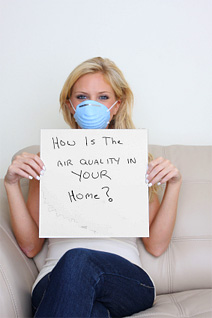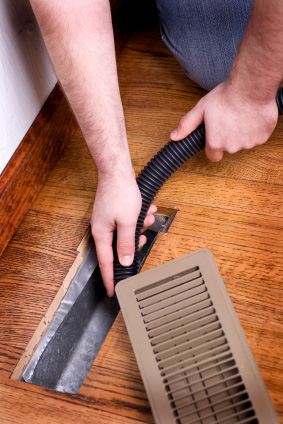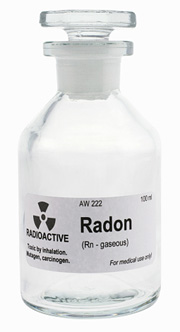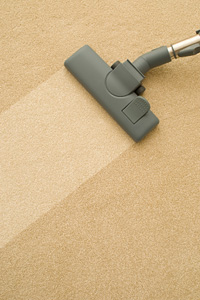
Indoor Air Quality - Air Quality Solutions Air Quality Concerns All of us face a variety of risks to our health as we go about our day-to-day lives. Driving in cars, flying in planes, engaging in recreational activities, and being exposed to environmental pollutants all pose varying degrees of risk.  Some risks are simply unavoidable. Some we choose to accept because to do otherwise would restrict our ability to lead our lives the way we want. And some are risks we might decide to avoid if we had the opportunity to make informed choices. Indoor air pollution is one risk that you can do something about.
Some risks are simply unavoidable. Some we choose to accept because to do otherwise would restrict our ability to lead our lives the way we want. And some are risks we might decide to avoid if we had the opportunity to make informed choices. Indoor air pollution is one risk that you can do something about.
In the last several years, a growing body of scientific evidence has indicated that the air within homes and other buildings can be more seriously polluted than the outdoor air in even the largest and most industrialized cities. Other research indicates that people spend approximately 90 percent of their time indoors. Thus, for many people, the risks to health may be greater due to exposure to air pollution indoors than outdoors.
In addition, people who may be exposed to indoor air pollutants for the longest periods of time are often those most susceptible to the effects of indoor air pollution. Such groups include the young, the elderly, and the chronically ill, especially those suffering from respiratory or cardiovascular disease.
EECA Energywise™ of New Zealand published a study titled Health Benefit Studies on Retrofitted Houses that had dramatic findings:
»» What Causes Indoor Air Problems?
»» Pollutant Sources
»» The correct amount of Ventilation
»» Indoor Air and Your Health
»» Measuring Pollutant Levels
»» Radon (Rn)
»» Health Effects of Radon
»» Biological Contaminants
»» Health Effects From Contaminants
»» Reducing Exposure to Contaminants
»» What About Carpet?
What Causes Indoor Air Problems? Indoor pollution sources that release gases or particles into the air are the primary cause of indoor air quality problems in homes. Inadequate ventilation can increase indoor pollutant levels by not bringing in enough outdoor air to dilute emissions from indoor sources and by not carrying indoor air pollutants out of the home. High temperature and humidity levels can also increase concentrations of some pollutants. Up to Top of Page »» Up to Menu Choices Pollutant Sources There are many sources of indoor air pollution in any home. These include combustion sources such as oil, gas, kerosene, coal, wood, and tobacco products; building materials and furnishings as diverse as deteriorated, asbestos-containing insulation, wet or damp carpet, and cabinetry or furniture made of certain pressed wood products; products for household cleaning and maintenance, personal care, or hobbies; central heating and cooling systems and humidification devices; and outdoor sources such as radon, pesticides, and outdoor air pollution.
wet or damp carpet, and cabinetry or furniture made of certain pressed wood products; products for household cleaning and maintenance, personal care, or hobbies; central heating and cooling systems and humidification devices; and outdoor sources such as radon, pesticides, and outdoor air pollution.
The relative importance of any single source depends on how much of a given pollutant it emits and how hazardous those emissions are. In some cases, factors such as how old the source is and whether it is properly maintained are significant. For example, an improperly adjusted gas stove can emit significantly more carbon monoxide than one that is properly adjusted.
Some sources, such as building materials, furnishings, and household products like air fresheners, release pollutants more or less continuously. Other sources, related to activities carried out in the home, release pollutants intermittently. These include smoking, the use of unvented or malfunctioning stoves, furnaces, or space heaters, the use of solvents in cleaning and hobby activities, the use of paint strippers in redecorating activities, and the use of cleaning products and pesticides in housekeeping. High pollutant concentrations can remain in the air for long periods after some of these activities. Up to Top of Page »» Up to Menu Choices Defining the correct amount of Ventilation The established standard for ventilation and acceptable air quality is defined in ASHRAE 62.2-2010 (American Society of Heating, Refrigeration and Air-Conditioning Engineers), www.ASHRAE.org (opens in a new window).
If too little outdoor air enters a home, pollutants can accumulate to levels that can pose health and comfort problems. Unless they are built with special mechanical means of ventilation, homes that are designed and constructed to minimize the amount of outdoor air that can "leak" into and out of the home may have higher pollutant levels than other homes. However, because some weather conditions can drastically reduce the amount of outdoor air that enters a home, pollutants can build up even in homes that are normally considered "leaky".
A blower door test will measure a dwelling's "natural" ventilation rate measured in air movement by both cubic feet per minute (CFM) and air changes per hour (ACH). It is always best practice to perform an additional blower door test after energy improvements have been accomplished to ensure minimum ventilation air requirements (CFM) are met. Up to Top of Page »» Up to Menu Choices Indoor Air and Your Health Health effects from indoor air pollutants may be experienced soon after exposure or, possibly, years later.
Immediate effects may show up after a single exposure or repeated exposures. These include irritation of the eyes, nose, and throat, headaches, dizziness, and fatigue. Such immediate effects are usually short-term and treatable. Sometimes the treatment is simply eliminating the person's exposure to the source of the pollution, if it can be identified. Symptoms of some diseases, including asthma, hypersensitivity pneumonitis, and humidifier fever, may also show up soon after exposure to some indoor air pollutants.
Sometimes the treatment is simply eliminating the person's exposure to the source of the pollution, if it can be identified. Symptoms of some diseases, including asthma, hypersensitivity pneumonitis, and humidifier fever, may also show up soon after exposure to some indoor air pollutants.
The likelihood of immediate reactions to indoor air pollutants depends on several factors. Age and preexisting medical conditions are two important influences. In other cases, whether a person reacts to a pollutant depends on individual sensitivity, which varies tremendously from person to person. Some people can become sensitized to biological pollutants after repeated exposures, and it appears that some people can become sensitized to chemical pollutants as well.
Certain immediate effects are similar to those from colds or other viral diseases, so it is often difficult to determine if the symptoms are a result of exposure to indoor air pollution. For this reason, it is important to pay attention to the time and place the symptoms occur. If the symptoms fade or go away when a person is away from the home and return when the person returns, an effort should be made to identify indoor air sources that may be possible causes. Some effects may be made worse by an inadequate supply of outdoor air or from the heating, cooling, or humidity conditions prevalent in the home.
Other health effects may show up either years after exposure has occurred or only after long or repeated periods of exposure. These effects, which include some respiratory diseases, heart disease, and cancer, can be severely debilitating or fatal. It is prudent to try to improve the indoor air quality in your home even if symptoms are not noticeable.
While pollutants commonly found in indoor air are responsible for many harmful effects, there is considerable uncertainty about what concentrations or periods of exposure are necessary to produce specific health problems. People also react very differently to exposure to indoor air pollutants. Further research is needed to better understand which health effects occur after exposure to the average pollutant concentrations found in homes and which occur from the higher concentrations that occur for short periods of time. Up to Top of Page »» Up to Menu Choices Measuring Pollutant Levels The federal government recommends that you measure the level of radon in your home. Without measurements there is no way to tell whether radon is present because it is a colorless, odorless, radioactive gas. Inexpensive devices are available for measuring radon. EPA provides guidance as to risks associated with different levels of exposure and when the public should consider corrective action. There are specific mitigation techniques that have proven effective in reducing levels of radon in the home. Up to Top of Page »» Up to Menu Choices Radon (Rn) The most common source of indoor radon is uranium in the soil or rock on which homes are built. As uranium naturally breaks down, it releases radon gas which is a colorless, odorless, radioactive gas. Radon gas enters homes through dirt floors, cracks in concrete walls and floors, floor drains, and sumps. When radon becomes trapped in buildings and concentrations build up indoors, exposure to radon becomes a concern.
Radon gas enters homes through dirt floors, cracks in concrete walls and floors, floor drains, and sumps. When radon becomes trapped in buildings and concentrations build up indoors, exposure to radon becomes a concern.
Any home may have a radon problem. This means new and old homes, well-sealed and drafty homes, and homes with or without basements.
Sometimes radon enters the home through well water. In a small number of homes, the building materials can give off radon, too. However, building materials rarely cause radon problems by themselves. Up to Top of Page »» Up to Menu Choices Health Effects of Radon The predominant health effect associated with exposure to elevated levels of radon is lung cancer. Research suggests that swallowing water with high radon levels may pose risks, too, although these are believed to be much lower than those from breathing air containing radon. Major health organizations (like the Centers for Disease Control and Prevention, the American Lung Association (ALA), and the American Medical Association) agree with estimates that radon causes thousands of preventable lung cancer deaths each year.
EPA estimates that radon causes about 14,000 deaths per year in the United States--however, this number could range from 7,000 to 30,000 deaths per year. If you smoke and your home has high radon levels, your risk of lung cancer is especially high. Up to Top of Page »» Up to Menu Choices Biological Contaminants These contaminants include bacteria, molds, mildew, viruses, animal dander and cat saliva, house dust mites, cockroaches, and pollen. There are many sources of these pollutants. Pollens originate from plants; viruses are transmitted by people and animals; bacteria are carried by people, animals, and soil and plant debris; and household pets are sources of saliva and animal dander. The protein in urine from rats and mice is a potent allergen. When it dries, it can become airborne. Contaminated central air handling systems can become breeding grounds for mold, mildew, and other sources of biological contaminants and can then distribute these contaminants through the home.
By controlling the relative humidity level in a home, the growth of some sources of biologicals can be minimized. A relative humidity of 30-50 percent is generally recommended for homes. Standing water, water-damaged materials, or wet surfaces also serve as a breeding ground for molds, mildews, bacteria, and insects. House dust mites, the source of one of the most powerful biological allergens, grow in damp, warm environments. Health Effects From Biological Contaminants Some biological contaminants trigger allergic reactions, including hypersensitivity pneumonitis, allergic rhinitis, and some types of asthma. Infectious illnesses, such as influenza, measles, and chicken pox are transmitted through the air. Molds and mildews release disease-causing toxins. Symptoms of health problems caused by biological pollutants include sneezing, watery eyes, coughing, shortness of breath, dizziness, lethargy, fever, and digestive problems.
Standing water, water-damaged materials, or wet surfaces also serve as a breeding ground for molds, mildews, bacteria, and insects. House dust mites, the source of one of the most powerful biological allergens, grow in damp, warm environments. Health Effects From Biological Contaminants Some biological contaminants trigger allergic reactions, including hypersensitivity pneumonitis, allergic rhinitis, and some types of asthma. Infectious illnesses, such as influenza, measles, and chicken pox are transmitted through the air. Molds and mildews release disease-causing toxins. Symptoms of health problems caused by biological pollutants include sneezing, watery eyes, coughing, shortness of breath, dizziness, lethargy, fever, and digestive problems.
Allergic reactions occur only after repeated exposure to a specific biological allergen. However, that reaction may occur immediately upon re-exposure or after multiple exposures over time. As a result, people who have noticed only mild allergic reactions, or no reactions at all, may suddenly find themselves very sensitive to particular allergens.
Some diseases, like humidifier fever, are associated with exposure to toxins from microorganisms that can grow in large building ventilation systems. However, these diseases can also be traced to microorganisms that grow in home heating and cooling systems and humidifiers. Children, elderly people, and people with breathing problems, allergies, and lung diseases are particularly susceptible to disease-causing biological agents in the indoor air. Up to Top of Page »» Up to Menu Choices Reducing Exposure to Biological Contaminants Install and use exhaust fans that are vented to the outdoors in kitchens and bathrooms and vent clothes dryers outdoors. These actions can eliminate much of the moisture that builds up from everyday activities. There are exhaust fans on the market that produce little noise, an important consideration for some people. Another benefit to using kitchen and bathroom exhaust fans is that they can reduce levels of organic pollutants that vaporize from hot water used in showers and dishwashers. Ventilate the attic and crawl spaces to prevent moisture build-up. Keeping humidity levels in these areas below 50 percent can prevent water condensation on building materials. If using cool mist or ultrasonic humidifiers, clean appliances according to manufacturer's instructions and refill with fresh water daily. Because these humidifiers can become breeding grounds for biological contaminants, they have the potential for causing diseases such as hypersensitivity pneumonitis and humidifier fever. Evaporation trays in air conditioners, dehumidifiers, and refrigerators should also be cleaned frequently. Thoroughly clean and dry water-damaged carpets and building materials (within 24 hours if possible) or consider removal and replacement. Water-damaged carpets and building materials can harbor mold and bacteria. It is very difficult to completely rid such materials of biological contaminants. Keep the house clean. House dust mites, pollens, animal dander, and other allergy-causing agents can be reduced, although not eliminated, through regular cleaning. People who are allergic to these pollutants should use allergen-proof mattress encasements, wash bedding in hot (130º F) water, and avoid room furnishings that accumulate dust, especially if they cannot be washed in hot water. Allergic individuals should also leave the house while it is being vacuumed because vacuuming can actually increase airborne levels of mite allergens and other biological contaminants. Using central vacuum systems that are vented to the outdoors or vacuums with high efficiency filters may also be of help. Take steps to minimize biological pollutants in basements. Clean and disinfect the basement floor drain regularly. Do not finish a basement below ground level unless all water leaks are patched and outdoor ventilation and adequate heat to prevent condensation are provided. Operate a dehumidifier in the basement if needed to keep relative humidity levels between 30-50 percent. Have central air handling systems, including furnaces, flues, and chimneys, inspected annually and promptly repair cracks or damaged parts. Blocked, leaking, or damaged chimneys or flues release harmful combustion gases and particles and even fatal concentrations of carbon monoxide. Strictly follow all service and maintenance procedures recommended by the manufacturer, including those that tell you how frequently to change the filter. If manufacturer's instructions are not readily available, change filters once every month or two during periods of use. Proper maintenance is important even for new furnaces because they can also corrode and leak combustion gases, including carbon monoxide. Up to Top of Page »» Up to Menu Choices What About Carpet? In recent years, a number of consumers have associated a variety of symptoms with the installation of new carpet. Scientists have not been able to determine whether the chemicals emitted by new carpets are responsible. If you are installing new carpet, you may wish to take the following steps:
If you are installing new carpet, you may wish to take the following steps:
Stop by and learn all about the Science of Building Performance at ComfortToLife.com

In the last several years, a growing body of scientific evidence has indicated that the air within homes and other buildings can be more seriously polluted than the outdoor air in even the largest and most industrialized cities. Other research indicates that people spend approximately 90 percent of their time indoors. Thus, for many people, the risks to health may be greater due to exposure to air pollution indoors than outdoors.
In addition, people who may be exposed to indoor air pollutants for the longest periods of time are often those most susceptible to the effects of indoor air pollution. Such groups include the young, the elderly, and the chronically ill, especially those suffering from respiratory or cardiovascular disease.
EECA Energywise™ of New Zealand published a study titled Health Benefit Studies on Retrofitted Houses that had dramatic findings:
- Admission to hospitals for respiratory conditions drop by 43%
- Days off school reduced by 23%
- Days off work drop 39%
- Identified the costs of certain diseases
- Psychological and stress benefits
- Quantitive risks to respiratory health established
- Calculated the percentage of health outcomes resulting from indoor dampness and mold (25-35% in general population)
- Over 90% of benefit are health
»» What Causes Indoor Air Problems?
»» Pollutant Sources
»» The correct amount of Ventilation
»» Indoor Air and Your Health
»» Measuring Pollutant Levels
»» Radon (Rn)
»» Health Effects of Radon
»» Biological Contaminants
»» Health Effects From Contaminants
»» Reducing Exposure to Contaminants
»» What About Carpet?
What Causes Indoor Air Problems? Indoor pollution sources that release gases or particles into the air are the primary cause of indoor air quality problems in homes. Inadequate ventilation can increase indoor pollutant levels by not bringing in enough outdoor air to dilute emissions from indoor sources and by not carrying indoor air pollutants out of the home. High temperature and humidity levels can also increase concentrations of some pollutants. Up to Top of Page »» Up to Menu Choices Pollutant Sources There are many sources of indoor air pollution in any home. These include combustion sources such as oil, gas, kerosene, coal, wood, and tobacco products; building materials and furnishings as diverse as deteriorated, asbestos-containing insulation,

The relative importance of any single source depends on how much of a given pollutant it emits and how hazardous those emissions are. In some cases, factors such as how old the source is and whether it is properly maintained are significant. For example, an improperly adjusted gas stove can emit significantly more carbon monoxide than one that is properly adjusted.
Some sources, such as building materials, furnishings, and household products like air fresheners, release pollutants more or less continuously. Other sources, related to activities carried out in the home, release pollutants intermittently. These include smoking, the use of unvented or malfunctioning stoves, furnaces, or space heaters, the use of solvents in cleaning and hobby activities, the use of paint strippers in redecorating activities, and the use of cleaning products and pesticides in housekeeping. High pollutant concentrations can remain in the air for long periods after some of these activities. Up to Top of Page »» Up to Menu Choices Defining the correct amount of Ventilation The established standard for ventilation and acceptable air quality is defined in ASHRAE 62.2-2010 (American Society of Heating, Refrigeration and Air-Conditioning Engineers), www.ASHRAE.org (opens in a new window).
If too little outdoor air enters a home, pollutants can accumulate to levels that can pose health and comfort problems. Unless they are built with special mechanical means of ventilation, homes that are designed and constructed to minimize the amount of outdoor air that can "leak" into and out of the home may have higher pollutant levels than other homes. However, because some weather conditions can drastically reduce the amount of outdoor air that enters a home, pollutants can build up even in homes that are normally considered "leaky".
A blower door test will measure a dwelling's "natural" ventilation rate measured in air movement by both cubic feet per minute (CFM) and air changes per hour (ACH). It is always best practice to perform an additional blower door test after energy improvements have been accomplished to ensure minimum ventilation air requirements (CFM) are met. Up to Top of Page »» Up to Menu Choices Indoor Air and Your Health Health effects from indoor air pollutants may be experienced soon after exposure or, possibly, years later.
Immediate effects may show up after a single exposure or repeated exposures. These include irritation of the eyes, nose, and throat, headaches, dizziness, and fatigue. Such immediate effects are usually short-term and treatable.

The likelihood of immediate reactions to indoor air pollutants depends on several factors. Age and preexisting medical conditions are two important influences. In other cases, whether a person reacts to a pollutant depends on individual sensitivity, which varies tremendously from person to person. Some people can become sensitized to biological pollutants after repeated exposures, and it appears that some people can become sensitized to chemical pollutants as well.
Certain immediate effects are similar to those from colds or other viral diseases, so it is often difficult to determine if the symptoms are a result of exposure to indoor air pollution. For this reason, it is important to pay attention to the time and place the symptoms occur. If the symptoms fade or go away when a person is away from the home and return when the person returns, an effort should be made to identify indoor air sources that may be possible causes. Some effects may be made worse by an inadequate supply of outdoor air or from the heating, cooling, or humidity conditions prevalent in the home.
Other health effects may show up either years after exposure has occurred or only after long or repeated periods of exposure. These effects, which include some respiratory diseases, heart disease, and cancer, can be severely debilitating or fatal. It is prudent to try to improve the indoor air quality in your home even if symptoms are not noticeable.
While pollutants commonly found in indoor air are responsible for many harmful effects, there is considerable uncertainty about what concentrations or periods of exposure are necessary to produce specific health problems. People also react very differently to exposure to indoor air pollutants. Further research is needed to better understand which health effects occur after exposure to the average pollutant concentrations found in homes and which occur from the higher concentrations that occur for short periods of time. Up to Top of Page »» Up to Menu Choices Measuring Pollutant Levels The federal government recommends that you measure the level of radon in your home. Without measurements there is no way to tell whether radon is present because it is a colorless, odorless, radioactive gas. Inexpensive devices are available for measuring radon. EPA provides guidance as to risks associated with different levels of exposure and when the public should consider corrective action. There are specific mitigation techniques that have proven effective in reducing levels of radon in the home. Up to Top of Page »» Up to Menu Choices Radon (Rn) The most common source of indoor radon is uranium in the soil or rock on which homes are built. As uranium naturally breaks down, it releases radon gas which is a colorless, odorless, radioactive gas.

Any home may have a radon problem. This means new and old homes, well-sealed and drafty homes, and homes with or without basements.
Sometimes radon enters the home through well water. In a small number of homes, the building materials can give off radon, too. However, building materials rarely cause radon problems by themselves. Up to Top of Page »» Up to Menu Choices Health Effects of Radon The predominant health effect associated with exposure to elevated levels of radon is lung cancer. Research suggests that swallowing water with high radon levels may pose risks, too, although these are believed to be much lower than those from breathing air containing radon. Major health organizations (like the Centers for Disease Control and Prevention, the American Lung Association (ALA), and the American Medical Association) agree with estimates that radon causes thousands of preventable lung cancer deaths each year.
EPA estimates that radon causes about 14,000 deaths per year in the United States--however, this number could range from 7,000 to 30,000 deaths per year. If you smoke and your home has high radon levels, your risk of lung cancer is especially high. Up to Top of Page »» Up to Menu Choices Biological Contaminants These contaminants include bacteria, molds, mildew, viruses, animal dander and cat saliva, house dust mites, cockroaches, and pollen. There are many sources of these pollutants. Pollens originate from plants; viruses are transmitted by people and animals; bacteria are carried by people, animals, and soil and plant debris; and household pets are sources of saliva and animal dander. The protein in urine from rats and mice is a potent allergen. When it dries, it can become airborne. Contaminated central air handling systems can become breeding grounds for mold, mildew, and other sources of biological contaminants and can then distribute these contaminants through the home.
By controlling the relative humidity level in a home, the growth of some sources of biologicals can be minimized. A relative humidity of 30-50 percent is generally recommended for homes.

Allergic reactions occur only after repeated exposure to a specific biological allergen. However, that reaction may occur immediately upon re-exposure or after multiple exposures over time. As a result, people who have noticed only mild allergic reactions, or no reactions at all, may suddenly find themselves very sensitive to particular allergens.
Some diseases, like humidifier fever, are associated with exposure to toxins from microorganisms that can grow in large building ventilation systems. However, these diseases can also be traced to microorganisms that grow in home heating and cooling systems and humidifiers. Children, elderly people, and people with breathing problems, allergies, and lung diseases are particularly susceptible to disease-causing biological agents in the indoor air. Up to Top of Page »» Up to Menu Choices Reducing Exposure to Biological Contaminants Install and use exhaust fans that are vented to the outdoors in kitchens and bathrooms and vent clothes dryers outdoors. These actions can eliminate much of the moisture that builds up from everyday activities. There are exhaust fans on the market that produce little noise, an important consideration for some people. Another benefit to using kitchen and bathroom exhaust fans is that they can reduce levels of organic pollutants that vaporize from hot water used in showers and dishwashers. Ventilate the attic and crawl spaces to prevent moisture build-up. Keeping humidity levels in these areas below 50 percent can prevent water condensation on building materials. If using cool mist or ultrasonic humidifiers, clean appliances according to manufacturer's instructions and refill with fresh water daily. Because these humidifiers can become breeding grounds for biological contaminants, they have the potential for causing diseases such as hypersensitivity pneumonitis and humidifier fever. Evaporation trays in air conditioners, dehumidifiers, and refrigerators should also be cleaned frequently. Thoroughly clean and dry water-damaged carpets and building materials (within 24 hours if possible) or consider removal and replacement. Water-damaged carpets and building materials can harbor mold and bacteria. It is very difficult to completely rid such materials of biological contaminants. Keep the house clean. House dust mites, pollens, animal dander, and other allergy-causing agents can be reduced, although not eliminated, through regular cleaning. People who are allergic to these pollutants should use allergen-proof mattress encasements, wash bedding in hot (130º F) water, and avoid room furnishings that accumulate dust, especially if they cannot be washed in hot water. Allergic individuals should also leave the house while it is being vacuumed because vacuuming can actually increase airborne levels of mite allergens and other biological contaminants. Using central vacuum systems that are vented to the outdoors or vacuums with high efficiency filters may also be of help. Take steps to minimize biological pollutants in basements. Clean and disinfect the basement floor drain regularly. Do not finish a basement below ground level unless all water leaks are patched and outdoor ventilation and adequate heat to prevent condensation are provided. Operate a dehumidifier in the basement if needed to keep relative humidity levels between 30-50 percent. Have central air handling systems, including furnaces, flues, and chimneys, inspected annually and promptly repair cracks or damaged parts. Blocked, leaking, or damaged chimneys or flues release harmful combustion gases and particles and even fatal concentrations of carbon monoxide. Strictly follow all service and maintenance procedures recommended by the manufacturer, including those that tell you how frequently to change the filter. If manufacturer's instructions are not readily available, change filters once every month or two during periods of use. Proper maintenance is important even for new furnaces because they can also corrode and leak combustion gases, including carbon monoxide. Up to Top of Page »» Up to Menu Choices What About Carpet? In recent years, a number of consumers have associated a variety of symptoms with the installation of new carpet. Scientists have not been able to determine whether the chemicals emitted by new carpets are responsible.

- Talk to your carpet retailer. Ask for information on emissions from carpet. Ask the retailer to unroll and air out the carpet in a well-ventilated area before installation.
- Ask for low-emitting adhesives if adhesives are needed. Consider leaving the premises during and immediately after carpet installation. You may wish to schedule the installation when most family members or office workers are out. Be sure the retailer requires the installer to follow the Carpet and Rug Institute's installation guidelines. (revised 12/10/2010)
- Open doors and windows. Increasing the amount of fresh air in the home will reduce exposure to most chemicals released from carpet. During and after installation, use window fans, room air conditioners, or other mechanical ventilation equipment you may have installed in your house, to exhaust fumes to the outdoors. Keep them running for 48 to 72 hours after the new carpet is installed.
- Contact your carpet retailer if objectionable odors persist. Follow the manufacturer's instructions for proper carpet maintenance.
Stop by and learn all about the Science of Building Performance at ComfortToLife.com
